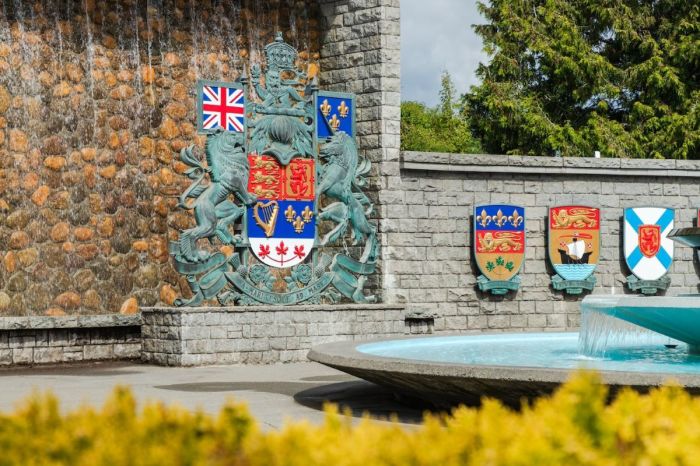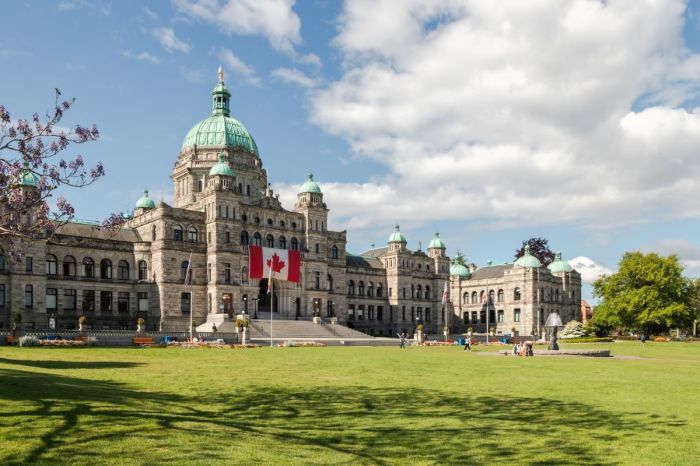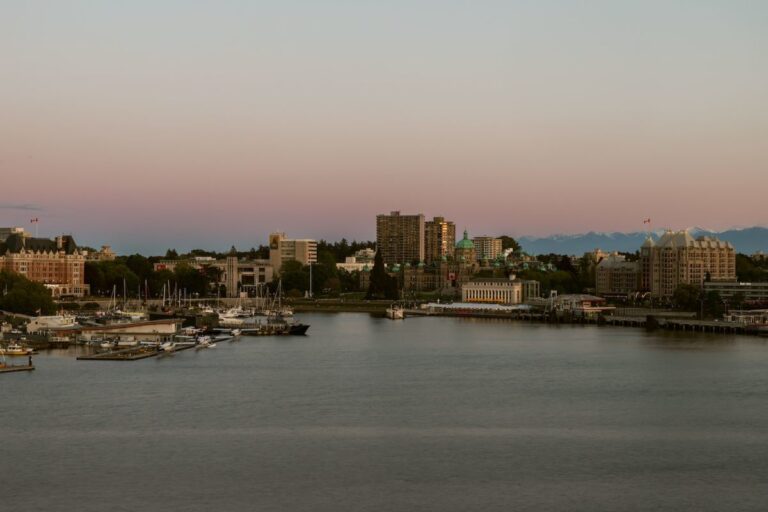The city of Victoria in Canada is called English more than English.
That’s because the British Columbia provincial capital settled and established British immigrants maintained their English in everything from high tea to love for gardening. Then there’s the name of the town. Victoria’s name comes from Queen Victoria, the monarch of the time.
Victoria is located at the southern tip of Vancouver Island, where Vancouver is northeasterly of mainland Canada, southeasterly across the Juan de Fuca Strait in Seattle, Washington, serving as a border. Washington is so close that you can enjoy views from the harbor where the peak of the Olympic Mountains is perfect for Victoria photos.

Get the latest news for free
Subscribe to get daily/weekly emails with Top Stories (plus special offers!) from Christian Post. I know first.
The imaginary line in the middle of the straits that form the borders of Canada’s unified provinces is established today, but this has not always been the case.

Returning to the early 19th century, there was considerable geopolitical tension between the US and the UK as the fur trade declined and the soon-to-be discovered gold rush brought prospectors.
The three-year conflict over invisible lines on the map was at the height of America’s expansion west, supported by the fate of the manifesto and the ambitions of monarchical British empires around the world. The Oregon Questions were settled peacefully in 1846 in the 49th Parallel, which was used to mark the border, but three years ago the establishment of Victoria literally planted the flag figuratively and advanced British claims in the Pacific Northwest.
My visit to Victoria came last month, leading up to Victoria Day, a national holiday born in honour of Queen Victoria. Today, like our anniversary, it serves as the unofficial start of the Canadian summer season. It was always a superficial patriotic event, but after diplomatic nausea in Canada and the US, the holidays became even more important after President Donald J. Trump had annexed as the 51st state.
Flags were everywhere, but I was surprised that Canadians never had the same flag-waving culture as Americans.

I mostly saw the instantly recognizable maple leaf flag, which celebrated its 60th birthday as the Canadian flag earlier this year. The most notable example was the large version covered above the front door of the British Columbia Legislature building (the Capitol version) that houses the state legislature.
We also saw the unique local flag of British Columbia. This includes Union Jack as a perception of the UK’s past. The demand for that flag was so great that a properly named flag store in downtown Victoria cannot keep it in stock. Even the demand for the sticker version is beyond supply.
Unlike the typical US state capitals that tend to be backwatered, Victoria has immeasurable charm, especially because of her past, as she was English rather than English.
The most prominent keeper of the past is the Fairmont Empress Hotel, a great example of a stately hotel built during the time of the Grand Hotel at the turn of the last century. It serves elegant, old school afternoon tea that rivals the Taka tea I experienced in London.
Beyond the quaint, it is a modern and lively city that is extremely easy to walk to thanks to a series of sidewalks and trails. In recent years, a car is needed for drives around Vancouver Island where you can find a small, growing wine scene that has shifted from hybrid varieties to internationally known vinyl fera grapes.
If you’re going
I flew to Victoria through a West Jet connection in Calgary, Alberta. The Canadian airline has a partnership with Delta Air Lines. You can easily fly to Seattle or Vancouver and take a seaplane for a quick flight to Victoria Port Airport. Renting a car and driving by car ferry is another option. Kenmore Air is an option for seaplanes.
Without a doubt, the best hotel in Victoria is Empress Fairmont, who takes her name from Queen Victoria like the city. With a renowned AAA 4 diamond rating, the 117-year-old hotel is a place where great and good men, including royalty, stay.
If Empress Fairmont is not an option, stay at Pendray Inn or Hotel Grand Pacific.
Considering the coastal location, outstanding seafood is expected. Victoria won’t be disappointed. Oysters, halibut, salmon and other fresh seasonal catches are found on the menus of most restaurants. Recommended restaurants include the luxury Marilena Cafe & Rover and rather casual milestones with a harbor terrace.
State legislative tours are free. The building, reminiscent of the Baroque European Palace, is open Monday through Friday from 8:30am to 4:30pm for self-guided tours. Guided-led tours are also offered. The council website has a full schedule.
The pedals have several guided bike tours. Meanwhile, you can take a guided kayak tour of Victoria Port through Kelpreef Adventure. No kayaking experience is required. I’m a beginner and had no issues.
A pause that appears to be not on any of the tours is Christchurch Cathedral. The early 20th century Gothic Revival Cathedral, seated as an Anglican bishop, features the front of the twin towers with a huge central pointed arch that reminds you of the triple-arched façade of Peterborough Cathedral in England. In addition to the regular service, the cathedral is open daily with no admission fee.
As the museum progresses, the Royal Museum of British Columbia is a must-see. It covers everything from nature to human history and includes a partial replica of the British Royal Navy Colonel George Vancouver, which was used on expeditions along the West Coast in the late 18th century.
Gardening’s British entertainment brings to life at the 55-acre Butchert Garden. You don’t have to be a garden enthusiast to appreciate the immeasurable beauty. This is one of the few attractions that require a car. The drive from downtown Victoria takes about 30 minutes each way.
To get an outdoor feel without adventure from the grid, head to Malahat Skywalk. The lookout offers a 360-degree view thanks to a 10-storey spiral lamp above the tree line. There are even slides for children and young people in their hearts to defeat them. Like a garden, you need a car to get there.
Dennis Lennox is a travel column for Christian Post.
Dennis Lennox writes about travel, politics and religion. He has appeared in the Financial Times, Independent, The Detroit News, Toronto Sun and other publications. Follow @dennislennox on Twitter.
